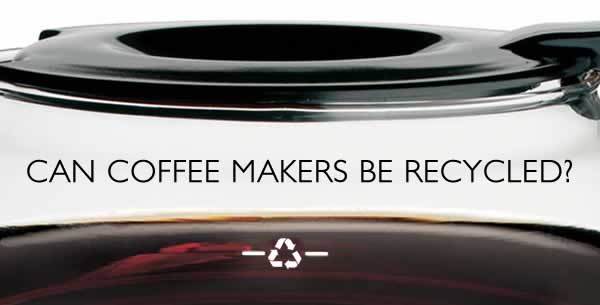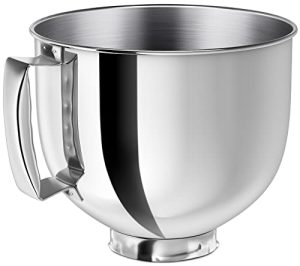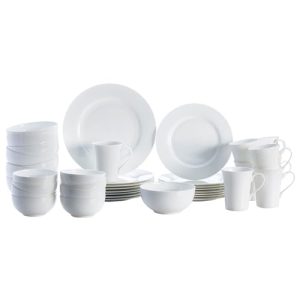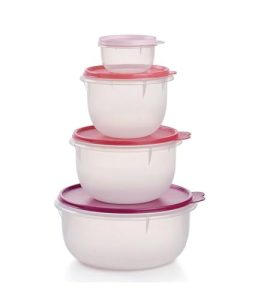Do you have an old coffee maker gathering dust in your kitchen corner? You might be wondering what to do with it now that it’s past its prime.
Throwing it away seems easy, but have you thought about recycling it? You’re not alone; many people share the same concern about the environmental impact of tossing out old appliances. Imagine the satisfaction of knowing that your trusty coffee maker can have a new life or contribute to something bigger rather than simply ending up in a landfill.
You’ll discover whether coffee makers can be recycled and how you can play a part in reducing electronic waste. Keep reading to uncover the surprising possibilities and simple steps you can take to make a difference.
Recycling Basics
Coffee makers can often be recycled, reducing electronic waste. Many parts, like metal and plastic, are reusable. Check local recycling programs for guidelines on proper disposal.
Recycling Basics Recycling is an essential practice in today’s environmentally-conscious world. It involves transforming waste materials into new, reusable items, reducing the need for raw resources. When it comes to coffee makers, understanding the basics of recycling can help you contribute positively to the environment.What Components Can Be Recycled?
Coffee makers are made up of various materials, including plastic, metal, and glass. Each of these components can often be recycled, but they require separation. You might be surprised to learn that even the smallest parts, like the metal screws and plastic buttons, can have a second life.How To Prepare Your Coffee Maker For Recycling
Before recycling your coffee maker, it’s essential to dismantle it properly. Remove any water filters, carafes, and cords. Make sure you clean each part thoroughly to avoid contamination. This simple step ensures that the recycling process is more efficient and effective.Where Can You Recycle Coffee Makers?
Many local recycling centers accept small appliances like coffee makers. Check with your nearest facility to confirm they take them. Some manufacturers and retailers also offer take-back programs. Participating in these programs can be a convenient way to ensure your coffee maker is recycled responsibly.Why Recycling Coffee Makers Matters
Recycling coffee makers reduces landfill waste and conserves resources. It helps minimize the environmental impact of producing new materials. Have you ever thought about how your actions contribute to a more sustainable world? Every small effort counts.Challenges In Recycling Coffee Makers
Some coffee makers have complex designs, making them challenging to dismantle. Not all components are recyclable, which can be frustrating. However, being proactive and informed can make the process smoother. Have you encountered these challenges before? Your experiences might inspire others to take action. Recycling your coffee maker is not just about disposing of old appliances. It’s a step towards sustainable living. By understanding the basics, you can make informed decisions and inspire others in your community to do the same.Components Of Coffee Makers
Coffee makers consist of various parts like plastic, metal, and glass. Many components are recyclable. Users can dismantle machines and sort materials. This practice helps reduce waste.
Coffee makers are a staple in many homes, offering that much-needed caffeine kick to start the day. But have you ever wondered what happens to these machines when they reach the end of their life? Understanding the components of coffee makers can help you decide if recycling is an option. By breaking down the machine, we can see which parts are recyclable and how you can contribute to less waste. ###Plastic Parts
Most coffee makers have a significant amount of plastic. These include the water reservoir, the filter basket, and sometimes the casing. Different types of plastic can be recycled, but it depends on your local recycling program. Check the recycling symbols on these parts. You might be surprised to learn that some plastics are more eco-friendly than others. Consider reusing parts for DIY projects if recycling isn’t an option. Perhaps a plastic water reservoir could become a plant pot? ###Metal Elements
Metal is a common component in coffee makers, especially in heating elements and carafes. Metals are typically more recyclable than plastics. They can be melted down and reused for other products. If you’ve ever taken apart an old coffee maker, you might have noticed the shiny metal inside. This metal often finds new life in other products. But, did you know that rusted or greasy metal can complicate the recycling process? Clean metal parts before recycling to avoid this issue. ###Electronic Components
Modern coffee makers often include electronic components like circuit boards and buttons. These require special handling due to the materials used, such as copper and solder. Many electronic waste facilities accept these parts for recycling. Think about the buttons and displays on your coffee maker. These elements have small but valuable materials inside. Would you consider recycling an option to recover these materials? Recycling electronics helps reduce the demand for new materials, saving energy and resources. Your small effort can make a big difference in reducing electronic waste. How can you ensure your coffee maker’s electronic parts are disposed of responsibly?Challenges In Recycling
Recycling coffee makers presents unique challenges due to their mixed materials. Separating components like plastic, metal, and electronics can be difficult. Proper disposal methods are essential to prevent environmental harm and encourage sustainable practices.
Recycling coffee makers might seem straightforward, but it’s fraught with challenges. You might wonder why a simple appliance poses such difficulties. The truth is, recycling goes beyond just tossing it into a bin. Every part needs careful handling and separation. When was the last time you thought about what materials make up your coffee maker? It’s not just plastic and metal; there’s more lurking inside.Material Separation
Coffee makers are a mishmash of components. They contain plastic, metal, glass, and sometimes even electronic circuits. Separating these materials is no easy task. Each part requires a different recycling process. Imagine trying to separate a tightly-knit bunch of threads—you can’t just pull them apart without effort. It’s the same with coffee makers. The complexity increases when you consider different models with varying designs. Not all recycling centers have the capability or equipment to handle such intricate dismantling.Hazardous Elements
Coffee makers often contain hazardous elements. Think of electronic circuits or heating elements. These parts can be harmful if not disposed of correctly. Have you ever wondered what happens when these materials mix with regular waste? They can leach into the soil or water, causing environmental damage. Proper disposal is crucial to prevent these toxic materials from wreaking havoc. Yet, many people aren’t aware of these hidden dangers lurking in their kitchen appliances. Would you want these elements contaminating your local landfill? These challenges beg the question: how can we make recycling coffee makers easier and safer? It’s a puzzle that requires innovative solutions and awareness from consumers like you. By understanding these obstacles, you can make informed choices that contribute to a healthier planet.
Credit: www.amazon.com
Eco-friendly Disposal Options
Recycling coffee makers can be a responsible choice for the environment. Many people wonder what to do with old appliances. Eco-friendly disposal options provide solutions. These methods help reduce waste and promote sustainability.
Drop-off Locations
Many cities offer drop-off locations for recycling. These places accept small appliances like coffee makers. They ensure proper disposal. Some electronics stores also have recycling programs. They might take old coffee makers, too. Check local stores for details.
Municipal Programs
Local governments often run recycling programs. These programs help residents dispose of appliances. Many municipalities offer curbside pickup for electronics. Some organize special recycling events. Participating in these programs is simple. It makes eco-friendly disposal easier.
Upcycling Ideas
Upcycling coffee makers offers creative opportunities. Old coffee makers can transform into unique items for your home. Reusing these appliances helps reduce waste and sparks creativity. Discover inventive ways to repurpose coffee makers with these ideas.
Creative Repurposing
Turn a coffee maker into a plant pot. Remove the inside parts and fill it with soil. It becomes a charming planter for herbs or small plants. Use the glass carafe as a vase. Fill it with water and fresh flowers. It adds a modern touch to your decor.
Convert the coffee maker into a unique lamp. Use the base to hold a light bulb. The glass carafe can act as the shade. It creates a quirky and stylish lighting fixture for any room.
Diy Projects
Make a bird feeder from the coffee maker. Attach the carafe to a sturdy base. Fill it with bird seeds and hang it outside. It attracts birds and adds beauty to your garden.
Create an art piece using coffee maker parts. Use the metal and glass elements to design sculptures. Assemble them creatively to form an abstract display. It can be a conversation starter in your living room.
Craft a storage container from the coffee maker. Use the carafe as a holder for kitchen utensils. It keeps them organized and easy to reach. The handle provides a convenient grip.
Brands With Recycling Programs
Many brands now offer recycling programs for old coffee makers. These programs help reduce waste and promote sustainability. By participating, you ensure that your used coffee maker is disposed of responsibly.
Recycling coffee makers might not be the first thing you think about when considering eco-friendly practices. However, many brands have stepped up to offer recycling programs, ensuring your old coffee machines don’t end up in a landfill. These programs are designed to make it easy for you to dispose of your appliances responsibly, contributing to a cleaner planet.Krups
Krups provides a convenient recycling solution for their products. They encourage customers to return their old coffee makers to designated recycling centers. This initiative not only helps reduce electronic waste but also promotes responsible consumption.Nespresso
Nespresso has a well-known recycling program. They offer free recycling bags for customers to collect used capsules, which can then be dropped off at designated locations. You can even arrange for a free pickup, making it exceptionally easy to participate.Keurig
Keurig has taken steps to reduce waste by offering a recycling program for their K-Cup pods. They provide detailed instructions on how to separate and recycle the different components of their products. This effort encourages consumers to think about the impact of their daily habits.Hamilton Beach
Hamilton Beach supports recycling through partnerships with e-waste facilities. They guide customers on how to properly dispose of their old appliances. This collaboration ensures that more materials are reused and less waste is generated.Philips
Philips promotes sustainability with its recycling program. They offer information on where to drop off old coffee makers and other appliances. By participating, you help Philips in their goal to achieve a circular economy. When was the last time you considered the environmental impact of your morning coffee ritual? By choosing brands that offer recycling programs, you make a small yet significant step towards sustainability. Your choice matters.Consumer Responsibility
When considering the environmental impact of our daily habits, consumer responsibility plays a crucial role. You might be surprised to learn that your coffee maker is an integral part of this equation. Whether you’re a casual coffee drinker or a daily espresso aficionado, understanding how to responsibly manage your coffee maker is vital. This involves not only recycling but also making sustainable choices and maintaining your machine effectively. Let’s dive into how you can make a positive impact starting today.
Sustainable Purchasing
Choosing a coffee maker that aligns with sustainable values is the first step. Look for brands that prioritize eco-friendly materials and energy-efficient designs. Consider machines with a longer lifespan to reduce waste over time. It might cost a little more upfront, but investing in quality often means fewer replacements and less landfill contribution. Have you ever thought about buying second-hand? It’s a great way to reduce demand for new products while saving money.
Proper Maintenance
Proper maintenance extends the life of your coffee maker, reducing the need for frequent replacements. Regular cleaning prevents buildup that can cause malfunctions. A simple descaling routine can keep your machine running smoothly and efficiently. Are you using the right water? Hard water can cause scale, impacting performance and energy use. By taking these small steps, you not only ensure a better cup of coffee but also contribute to a more sustainable lifestyle.
Every decision you make, from purchasing to maintenance, plays a part in the broader environmental picture. The question is, how will you influence it? By taking responsibility for your coffee maker, you can enjoy your favorite brew while being kind to the planet. What changes will you make today?

Credit: www.fcgov.com
Environmental Impact
Coffee makers often end up in landfills, contributing to environmental waste. Recycling them can reduce pollution and conserve resources. Many parts, like metal and plastic, are recyclable, promoting sustainability.
Coffee makers are a staple in many homes, offering that perfect cup of joe each morning. But have you ever considered the environmental impact of these appliances once they reach the end of their life? Recycling coffee makers can play a crucial role in reducing waste and conserving resources. Let’s explore how recycling can make a difference.Reducing Waste
Recycling coffee makers can significantly reduce the amount of waste that ends up in landfills. Many components in these machines, such as plastic and metal, can take decades to decompose. By recycling, you ensure these materials are reused rather than left to pollute the environment. I remember the first time I took my old coffee maker to an electronic recycling center. It was eye-opening to see how easily I could prevent waste just by taking that extra step. Have you ever thought about where your appliances end up?Conserving Resources
Recycling coffee makers also helps in conserving valuable resources. Manufacturing new products from raw materials requires energy and water. By recycling, you contribute to reducing the demand for these resources. Imagine the difference if everyone recycled their coffee makers. The savings in energy and raw materials would be substantial. Plus, it’s an easy way to make a positive impact without changing your daily routine. Recycling might seem like a small action, but it can have a big impact on the environment. Next time you consider tossing out an old appliance, think about where it could go instead. Are you ready to make a difference?
Credit: buydontbuy.net
Frequently Asked Questions
What Do You Do With An Old Coffee Maker?
Recycle or donate your old coffee maker to minimize waste. Check local recycling centers or electronic waste facilities. Consider repurposing it for other kitchen uses, like a plant holder. Selling or gifting it can also give it a new life.
Always dispose of responsibly to protect the environment.
Can I Recycle Coffee Makers?
Yes, coffee makers can be recycled. Check local recycling centers for electronics disposal options. Some manufacturers offer recycling programs. Removing non-recyclable parts, like plastic, is essential. Proper recycling helps reduce environmental impact and saves resources. Make sure to follow guidelines for safe disposal.
Can You Put A Coffee Machine In The Recycling Bin?
You can’t put a coffee machine in the recycling bin. They contain electronic parts and need special recycling. Contact local e-waste facilities for proper disposal. Ensure safe and environmentally friendly recycling by following local guidelines.
Where To Donate An Old Coffee Maker?
Donate your old coffee maker to local charities, thrift stores, or recycling centers. Check online platforms like Freecycle or Craigslist for nearby donation spots. Ensure it’s clean and functional before donating. Contact organizations like Goodwill or Salvation Army for guidance on drop-off locations.
Conclusion
Recycling coffee makers benefits the environment and reduces waste. Many parts can be reused. Check local recycling programs for options. Some companies offer take-back programs. This helps manage electronic waste responsibly. Simple steps make a big impact. Disposing of old appliances can be easy.
Look for drop-off centers nearby. Recycling creates new resources from old products. Consider donating if the coffee maker still works. Someone else might use it. These actions support a sustainable future. Making mindful choices counts. Start with small changes at home.
Every effort helps the planet. Make recycling part of your routine today.



